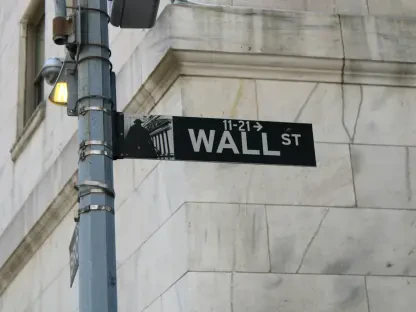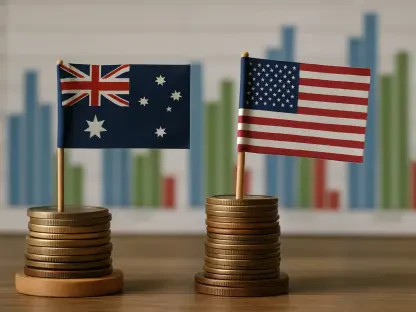I’m thrilled to sit down with Priya Jaiswal, a renowned expert in banking, business, and finance, whose deep knowledge of market analysis, portfolio management, and international business trends offers invaluable insights. Today, we’re diving into the hot topic of the potential replacement of Federal Reserve Chair Jerome Powell, a decision that could send ripples through global markets. Our conversation will explore the implications of this choice for investors, the frontrunners in the race, and the delicate balance of the Fed’s independence from political influence. Let’s get started.
Can you walk us through why the selection of the next Federal Reserve Chair holds so much weight for investors and financial markets?
Absolutely. The Federal Reserve Chair wields immense power over monetary policy, which directly impacts interest rates, inflation, and economic growth. Investors closely watch this role because the Chair’s decisions can sway everything from stock prices to bond yields. A Chair perceived as steady and independent can instill confidence, signaling predictability in policy. On the other hand, uncertainty or perceived political interference can trigger volatility, as markets crave stability above all. It’s not just about the person; it’s about the message their appointment sends regarding the Fed’s autonomy and approach to challenges like inflation or recession risks.
How does the perception of the Fed Chair’s independence from the White House influence market confidence?
Independence is the bedrock of the Fed’s credibility. When markets believe the Chair operates free from political pressure, they trust that decisions will be based on economic data rather than electoral or partisan goals. This trust keeps volatility in check and supports long-term investment planning. If a Chair is seen as a White House puppet, it erodes that faith, leading to fears of policies driven by short-term political wins rather than sustainable growth. You might see jittery markets, with investors pulling back or demanding higher risk premiums on U.S. assets.
Let’s talk about the leading candidates to replace the current Chair. What can you tell us about the frontrunners in this race?
Based on recent speculation and online betting platforms like Polymarket and Kalshi, three names stand out: Christopher Waller, Kevin Hassett, and Kevin Warsh. Waller is a current Fed Governor, often viewed as a continuity candidate due to his experience and balanced approach. Hassett, an economic adviser with close ties to the administration, raises eyebrows about independence. Warsh, a former Fed Governor, brings a mix of insider knowledge and public criticism of past Fed policies, making him a bit of a wildcard. Each carries a different flavor of risk and reward for markets.
Focusing on Christopher Waller, why do some investors see his potential nomination as a reassuring signal for markets?
Waller’s appeal lies in his track record of flexibility and pragmatism. He’s been at the Fed during turbulent times and has shown a willingness to adapt quickly, whether that’s advocating for rate cuts when data supports it or holding steady otherwise. Investors appreciate that he doesn’t seem rigidly tied to a hawkish or dovish stance. His nomination would likely signal continuity with the current Fed’s style, reducing the risk of abrupt policy shifts. That kind of predictability is often greeted with a sigh of relief in trading rooms, as it minimizes uncertainty.
On the other hand, there’s concern about candidates who might be too aligned with the administration. Why is this seen as a threat to the Fed’s independence?
When a nominee appears too closely tied to the White House, it raises red flags about whether the Fed will prioritize economic stability or political agendas. The Fed’s role is to make tough, sometimes unpopular calls—like raising rates to curb inflation—even if they clash with a president’s goals. A Chair perceived as a loyalist might face pressure to keep rates low to boost short-term growth, even if it risks long-term damage like runaway inflation. This undermines the Fed’s credibility, and markets can react poorly, with potential sell-offs in U.S. assets or spikes in longer-term yields as trust wanes.
Looking at Kevin Warsh specifically, what makes his potential nomination seem so unpredictable to market analysts?
Warsh is often labeled a wildcard because of his history. As a former Fed Governor, he’s got the credentials, but during his tenure and after, he’s been vocal about tightening monetary policy and criticizing the Fed’s expansive balance sheet. More recently, he’s shifted to supporting lower rates, which confuses some investors about his true stance. His push to shrink the Fed’s balance sheet could also raise government borrowing costs, a concern for markets already wary of fiscal strain. That inconsistency and potential for disruption make him a harder bet to predict.
There’s also talk of the risk if a nominee lacks deep experience in economics or at the Fed. How could such a choice impact market sentiment?
Appointing someone without a strong background in economics or central banking would be a shock to the system. Markets rely on the Fed Chair having the expertise to navigate complex crises—think 2008 or the pandemic recovery. An inexperienced nominee could signal a disregard for the Fed’s technical role, amplifying fears of mismanagement or politically driven decisions. You’d likely see a sharp negative reaction, with increased volatility, a weaker dollar, and possibly higher yields as investors price in that uncertainty. It’s a gamble that could rattle confidence profoundly.
Finally, what is your forecast for how this leadership transition at the Fed might play out for markets in the coming months?
It’s tough to predict with certainty, but I think we’re in for a period of heightened sensitivity. If a candidate like Waller emerges, who’s seen as a safe pair of hands, markets could stabilize quickly, focusing back on data like inflation and employment. However, if a more politically aligned or unpredictable figure is chosen, we might see sustained volatility, with investors hedging against policy missteps. The dollar and bond yields will be key indicators to watch. Beyond that, the bigger question is how this sets the tone for the Fed’s independence in the long run—markets will be looking for any hint of erosion there, and that could have lasting effects well into the next year.









